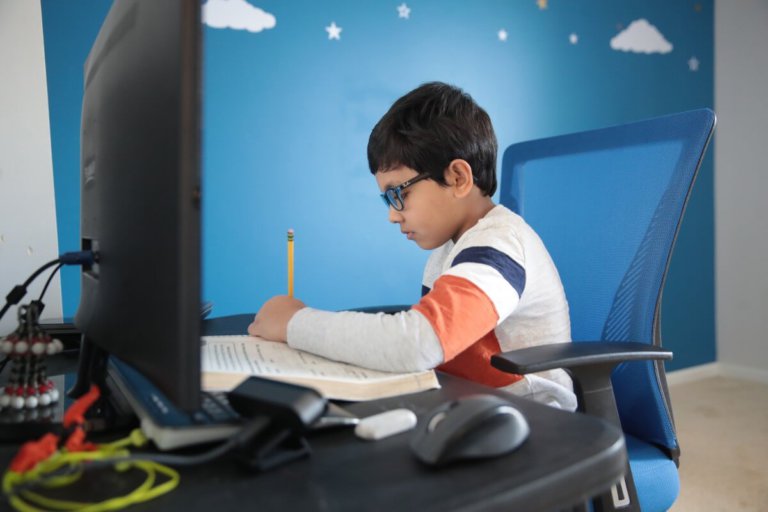
If you’re a caregiver who’s stuck at home during lockdown, then you know that keeping young students entertained during virtual learning sessions isn’t always easy. Especially if their teachers are stuck behind a screen, relying on you to keep them motivated in the midst of lockdowns.
There is huge pressure on teachers to be innovative these days, said Branksome Hall Asia’s Director of Technology Dr Terry McAdams.
“Parents want value for money so if teachers are not providing a high-quality education then there will be consequences,” McAdams tells Study International.
“And many parents are at home with children so privy to what is happening in the online class. They have a window into their child’s learning and if they don’t like what they see, they will let schools know.”
External administrators can sign into online lessons too and judge how engaging they are, which can be an added stress for international schools.
To keep students proactive during these uncertain times, international schools must roll out innovative, flexible virtual learning techniques to hold the attention of easily-distracted minds.

Engaging online content equals engaged online students. Source: Alain Jocard/AFP
Versatile virtual learning techniques
From a Director of Technology’s perspective, one way to ensure that teachers remain innovative is to share best practices.
To achieve this, schools can set up a shared Google Doc to note down handy tools, apps and techniques for online learning that will help teachers, and even parents, with virtual learning.
“The number of free online tools that have been made available during the COVID-19 pandemic is immense and our teachers have been using many of them and sharing their ideas,” said McAdams.
For more hands-on subjects, like science, the South Korean international school has sent art supplies through the post so that students can work away from their electronic devices and focus on practical tasks.
“The teacher experiments in the science lab have been particularly engaging for students. Some are filmed and explained while others utilise household objects for the students to conduct themselves, the red cabbage litmus test is a perfect example of this sort of innovation,” McAdams adds.
Y7 created their own indicator from red cabbage to test the pH of house hold items #youngscientists #impressed @YH_UpperSchool pic.twitter.com/0l5YtqxlL0
— York House Science (@YH_Science) May 12, 2020
Alongside leading the educational technology vision for the School, Dr. Terry McAdams is also a teacher of the International Baccalaureate (IB) for Computer Science.
During the lockdown, he’s produced a few innovative virtual learning experiences of his own.
“I was interested in running a sentiment analysis experiment on Twitter so I taught my students how to train IBM Watson (a question-answering computer system) using supervised learning,” he said.
“They then wrote a programme to categorise twitter comments about online learning.”
The most virtually engaging online lessons for him? Physical Education (PE).
“Perhaps the most positive experience occurs during PE lessons where mums with their children record themselves doing yoga and other exercises then upload the videos through Seesaw and Google Classroom,” he said.

To replace outdoor PE lessons, teachers must integrate engaging PE sessions indoors. Source: Stephane De Sakutin/AFP
The bond between parent and professor
It’s clear to see that parents and caregivers play a pivotal role in ensuring that online lessons run smoothly.
Hence why a strong, sustainable bond between both parties — the teacher and the caregiver — needs to be built.
“I would say that we have been hugely successful in keeping our students engaged. In fact, our parents sent lunch and snacks for all of the teachers to say thank you for their efforts,” McAdams notes.
Yet, there is always room for improvement.
Acknowledging this, Branksome Hall Asia (BHA) decided to conduct surveys with students and parents to see which virtual learning techniques were the most useful.
After receiving feedback, BHA made instant changes to their online education, reissued the survey and noticed how parents reported significant improvements in the newer version.
Such constant communication with parents and students ensure international schools like BHA can continuously refine their virtual learning methods and meet expectations.

In a time of social distancing, will school students begin to feel ‘socially distant’ during virtual learning sessions? Source: Stephane De Sakutin/AFP
What the future holds for online education
From McAdam’s perspective, online learning has evolved significantly in the past two months and has highlighted what pedagogical practice works and what doesn’t.
“With the social cues of body language, facial expressions, and the ability to view another’s work, students must concentrate more to follow the thread of the lesson. This increased concentration leads to fatigue, which in turn leads to misunderstanding and a loss of focus,” he says.
Online learning will require breaks in screen time for students to complete activities away from the electronic device and interact with physical objects pertinent to their inquiry. Only then should they resume live streaming to apply knowledge and demonstrate understanding.
Many physical and mental wellness practices to keep students motivated should be included too.
“What works in an online classroom will also work in a physical environment and teachers will have developed new skills.”
McAdams also advises international schools to adopt systematic plan for online learning that’s grounded in research.
After all, “failing to prepare is preparing to fail and we want to make sure that we are ready for another pandemic,” he says.
Liked this? Then you’ll love…
5 reasons you should take IB courses online
How Estonia is leading the way in online career guidance — and why it matters







